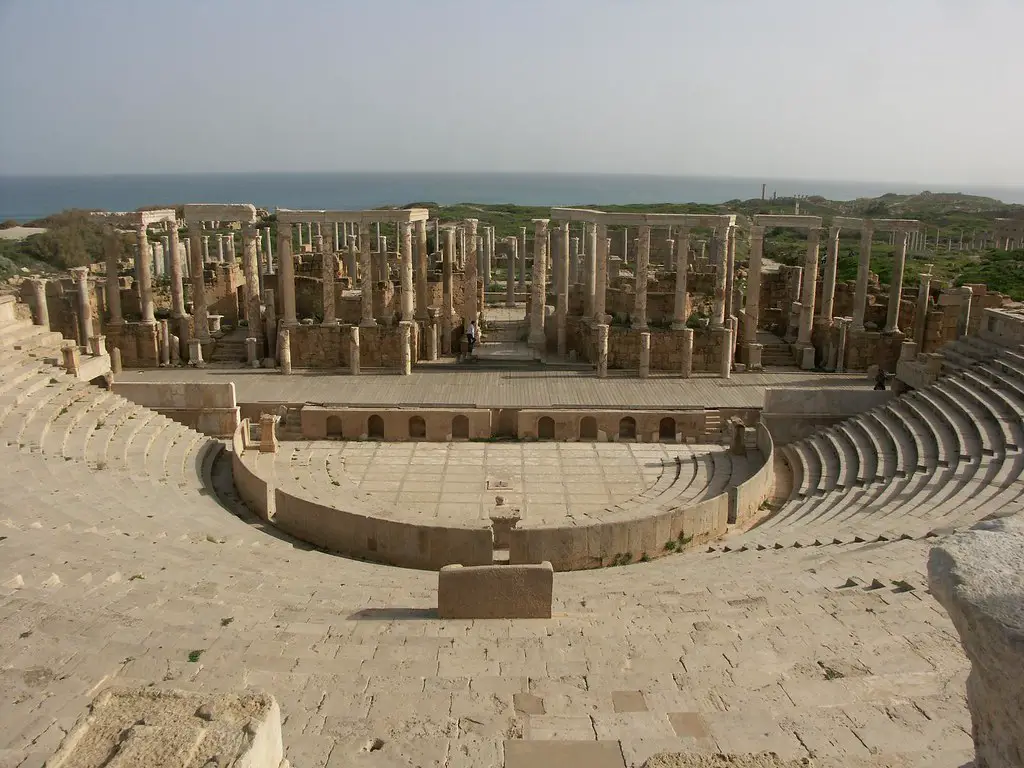💪 Support independent web, support us:
Leptis Magna is an ancient Roman city located in present-day Libya.
It was one of the largest and most prosperous cities in the Roman Empire and is now a UNESCO World Heritage Site.
What to see or do: Visitors to Leptis Magna can explore the extensive ruins of the city, which include a forum, amphitheater, basilica, and bathhouses.
The most famous site in Leptis Magna is the Arch of Septimius Severus, a triumphal arch that was built to celebrate the victories of the Roman emperor.
Don’t miss: Be sure to visit the Hadrianic Baths, which were built during the reign of the Roman emperor Hadrian. These impressive baths were the largest in Africa and feature beautifully preserved mosaics and frescoes.
Insider travel tips: To fully appreciate the beauty and history of Leptis Magna, it’s best to visit early in the morning or in the late afternoon when the light is most flattering.
Be prepared for a fair amount of walking, and wear comfortable shoes and clothing that will protect you from the sun.
Finally, be sure to bring plenty of water and sunscreen to stay hydrated and protected from the intense Libyan heat.
2. Sabratha Theatre

An ancient Roman theatre located in Sabratha, Libya.
What to see or do: Visitors can explore the ruins of the theatre and imagine what life was like during the Roman Empire. The theatre has a capacity of 5,000 spectators and still has its original stage and seating intact.
Don’t miss: The intricate designs and carvings on the auditorium walls, depicting various elements of Roman life and mythology.
Insider travel tips: Visit during early morning or late afternoon to avoid the heat and crowds. Wear comfortable shoes and bring plenty of water.
Make sure to also visit the nearby Sabratha Archaeological Museum to see more ancient artifacts and learn more about the history of the area.
3. Roman Arch of Marcus Aurelius
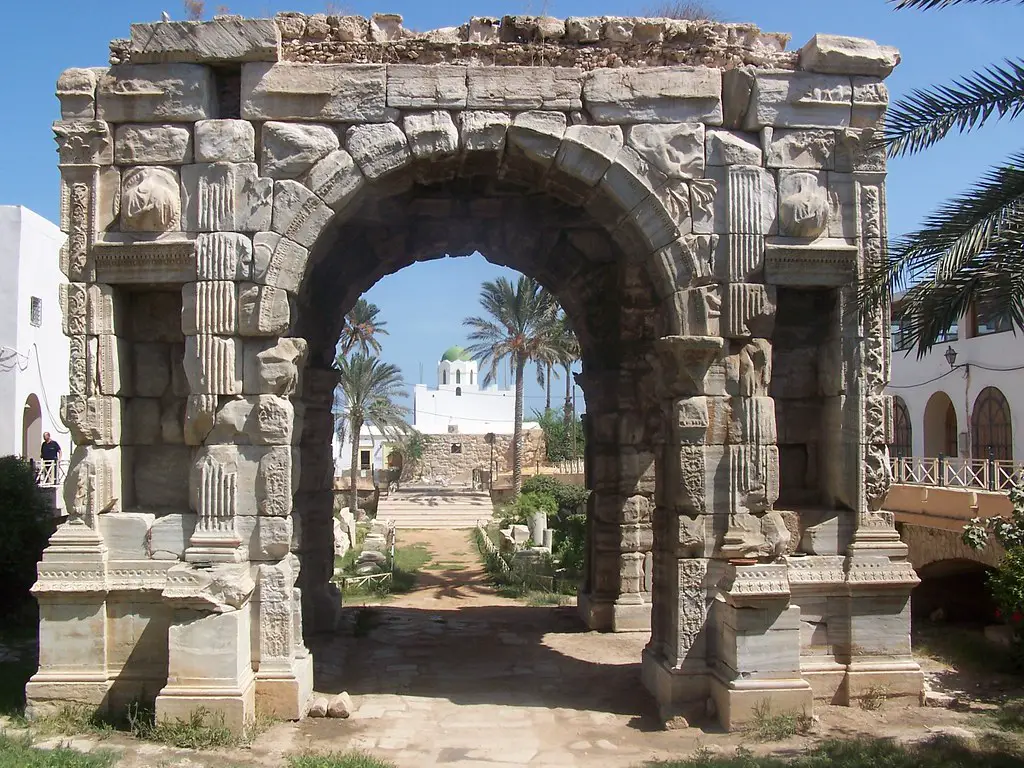
The Roman Arch of Marcus Aurelius is a historic landmark in Tripoli, Libya. It was built in the second century AD to honor the Emperor and mark the entrance to the city.
What to see or do: Visitors can admire the intricate carvings and designs on the arch, which depict scenes from the Emperor’s life and military conquests.
The arch is made from marble and stands at around 14 meters tall.
Don’t miss: Don’t miss the chance to see the inscription on the arch, which reads “To the Emperor Caesar Marcus Aurelius Antoninus Augustus, conqueror of Germans and Sarmatians, the Senate and people of Rome dedicated this triumphal arch.
Insider travel tips: – Visit during the early morning or late afternoon to avoid the crowds and enjoy the arch in peace.
4. Theatre of Sabratha

The Theatre of Sabratha is a stunning ancient Roman theatre located in Sabratha, Libya.
What to see or do: Visitors can marvel at the remarkable architecture of the theatre, which dates back to the 2nd century AD and once seated over 5,000 people.
The stage is adorned with intricate carvings and statues, and the acoustics are still considered excellent.
Don’t miss: Be sure to take a moment to appreciate the sweeping views of the Mediterranean Sea from the theatre’s seats.
The Theatre of Sabratha is also home to a number of festivals and performances throughout the year, so make sure to check the schedule if you’re interested in catching a show.
Insider travel tips: – The theatre can get very busy during peak tourist season, so it’s recommended to visit early in the day to avoid crowds.
5. Arch of Septimus Severus
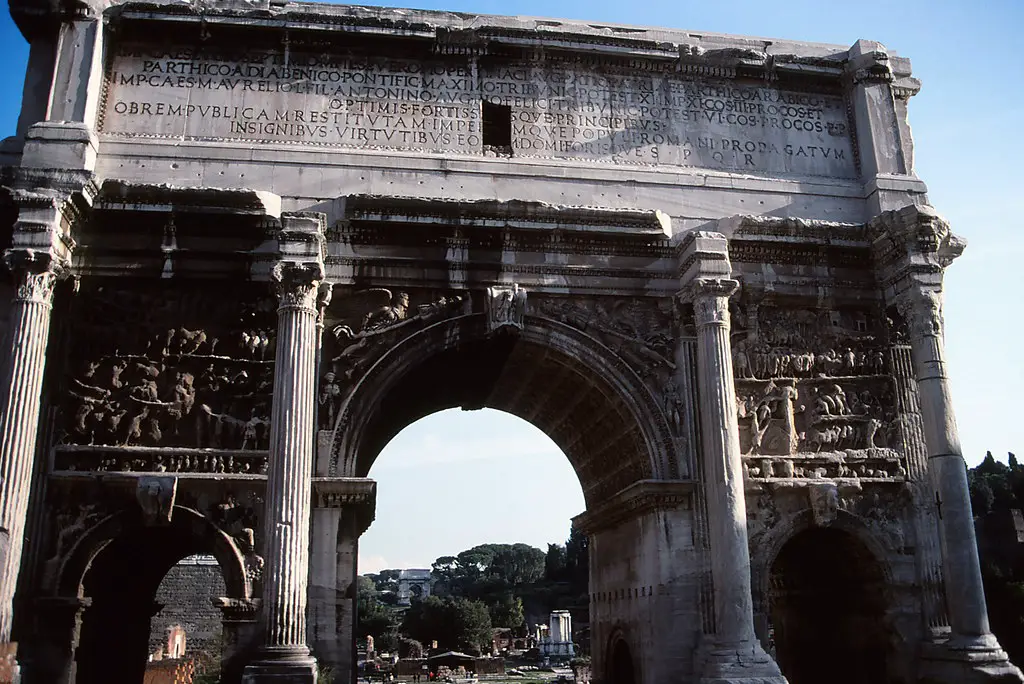
The Arch of Septimus Severus is a triumphal arch located in the Roman Forum, Rome, Italy.
What to see or do: Visitors can marvel at the impressive architecture of the Arch of Septimus Severus and appreciate its historical significance. The arch commemorates the military victories of Emperor Septimius Severus and his two sons, Caracalla and Geta.
Don’t miss: Be sure to notice the intricate carvings and reliefs that adorn the arch, depicting scenes of battle and victory.
Insider travel tips: To avoid the crowds, it’s best to visit early in the morning or late in the afternoon. Additionally, be mindful of pickpockets in the busy tourist area.
6. Red Castle Museum
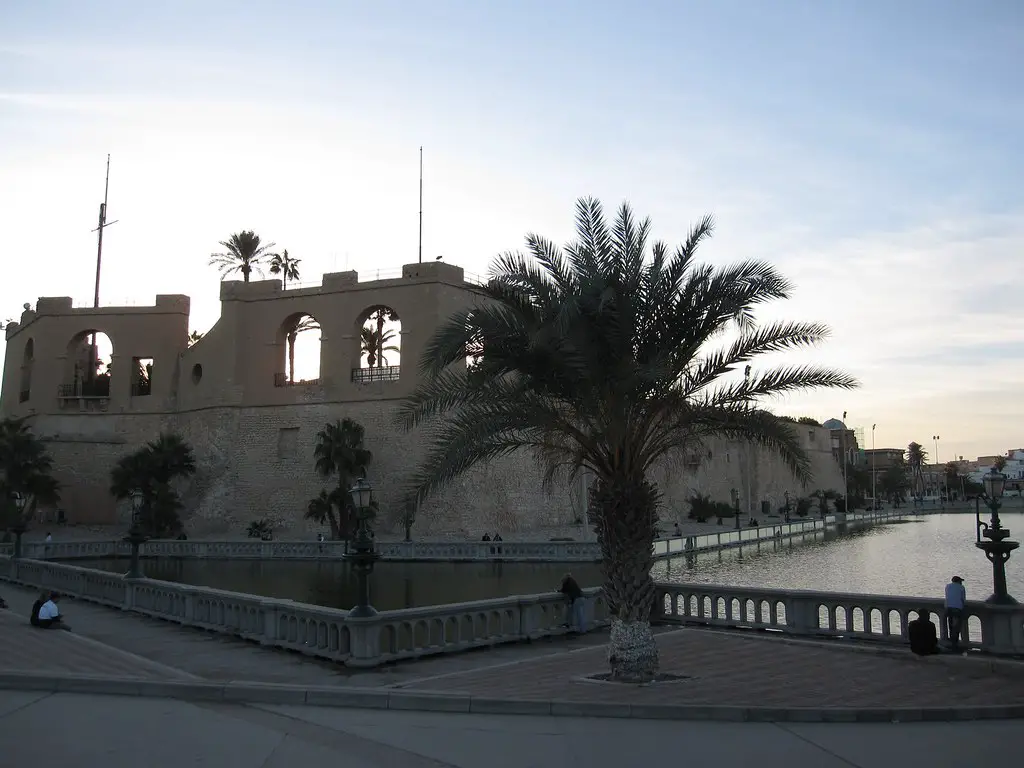
The Red Castle Museum, also known as Qasr Al-Hamra, is a stunning 16th-century fortress located in the heart of Amman, Jordan.
What to see or do: The museum offers a glimpse into Jordan’s rich history with exhibits and artifacts showcasing the country’s cultural heritage and Islamic art.
Admire the intricate carvings on the stone walls, explore the palace’s many courtyards, and take in the panoramic views of Amman from the rooftop.
Don’t miss: The grand reception hall, the vast underground cistern, and the beautiful Ottoman-style bathhouse are some of the highlights of a visit to the Red Castle Museum.
Insider travel tips: – Visit the museum in the early morning when it opens to avoid large crowds and the heat of the day.
7. As-Saraya Al-Hamra Museum
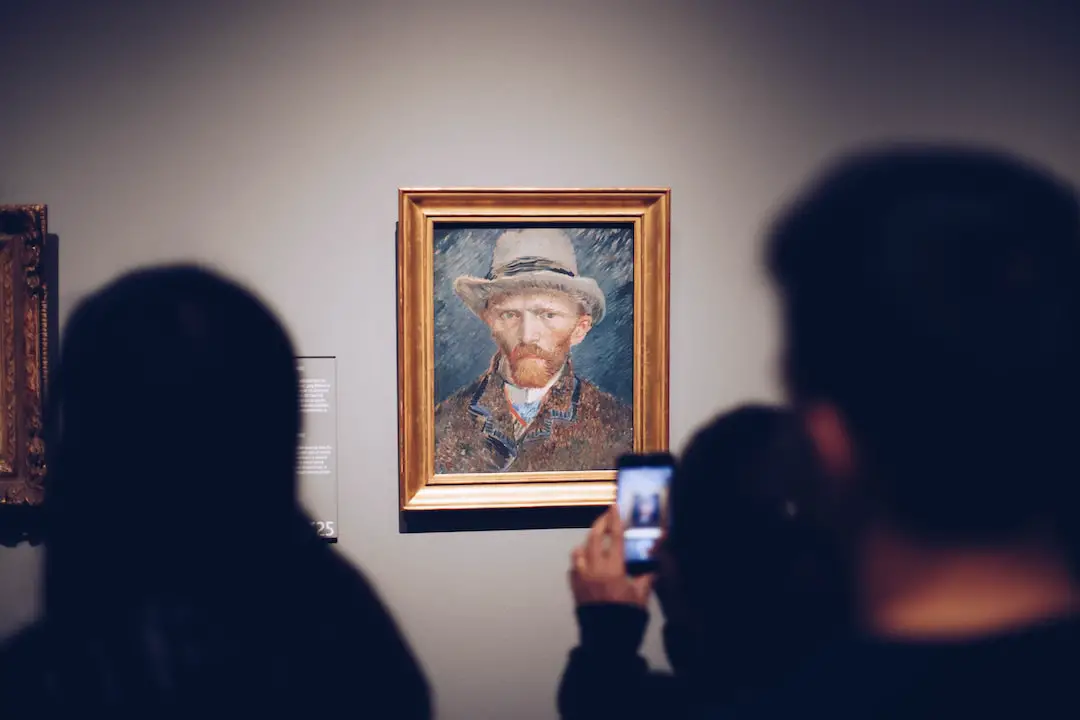
As-Saraya Al-Hamra Museum is a historical museum located in the heart of Jeddah, Saudi Arabia. It is housed in a fortified palace that was built around 1890.
What to see or do: The museum showcases traditional Arabian lifestyle and customs from the Ottoman period through authentic artefacts, manuscripts, photographs, and handcrafted items. Visitors can explore the various rooms and halls of the palace that have been restored to their original grandeur.
Don’t miss: The grand entrance hall adorned with intricate carvings and frescoes is a must-see. Also, check out the private quarters of the Ottoman governor, including the reception room and the emperor’s private chambers.
Insider travel tips: It’s best to visit the museum in the morning or late afternoon to avoid the midday heat. Visitors should dress modestly as a sign of respect for the cultural significance of the site.
The museum is easily accessible by car or taxi, and there are parking facilities nearby.
8. Al-Rahba Citadel
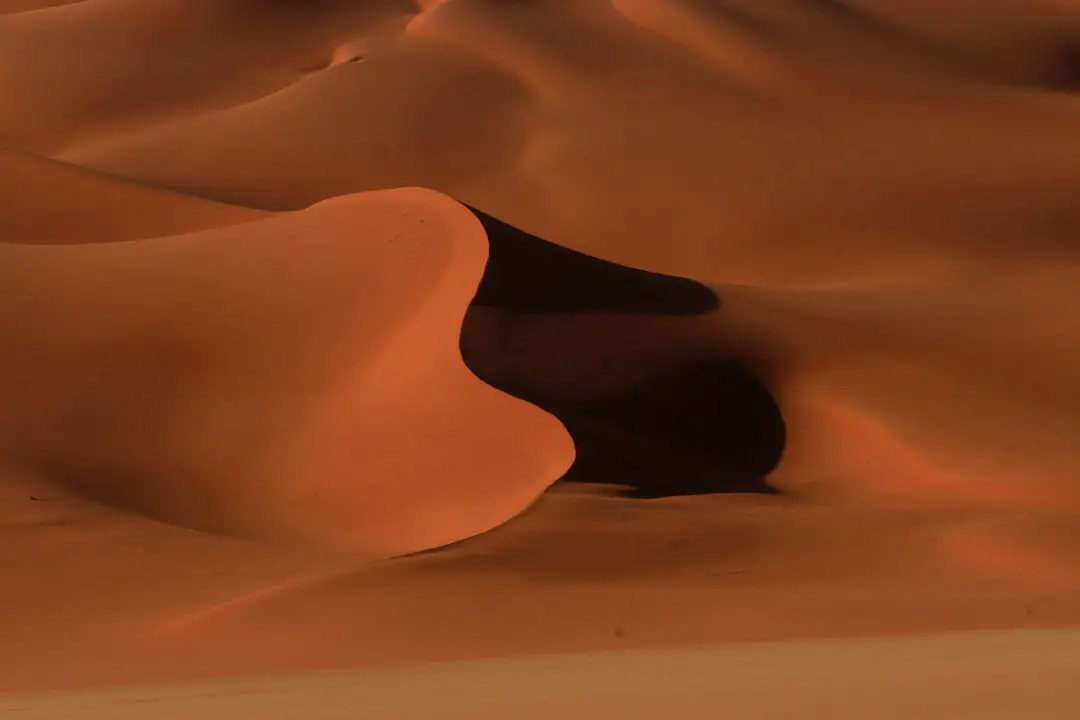
A historic citadel located in the UAE.
What to see or do: Explore the ruins of the citadel and take in the ancient architecture and stunning views of the surrounding landscape.
Don’t miss: The chance to climb to the top of the citadel and marvel at the panoramic views from the ancient battlements.
Insider travel tips: Be sure to wear comfortable walking shoes and bring plenty of water, as the climb to the top can be strenuous.
Try to visit early in the day or later in the afternoon to avoid the heat of the midday sun.
9. Al Qubah Mosque
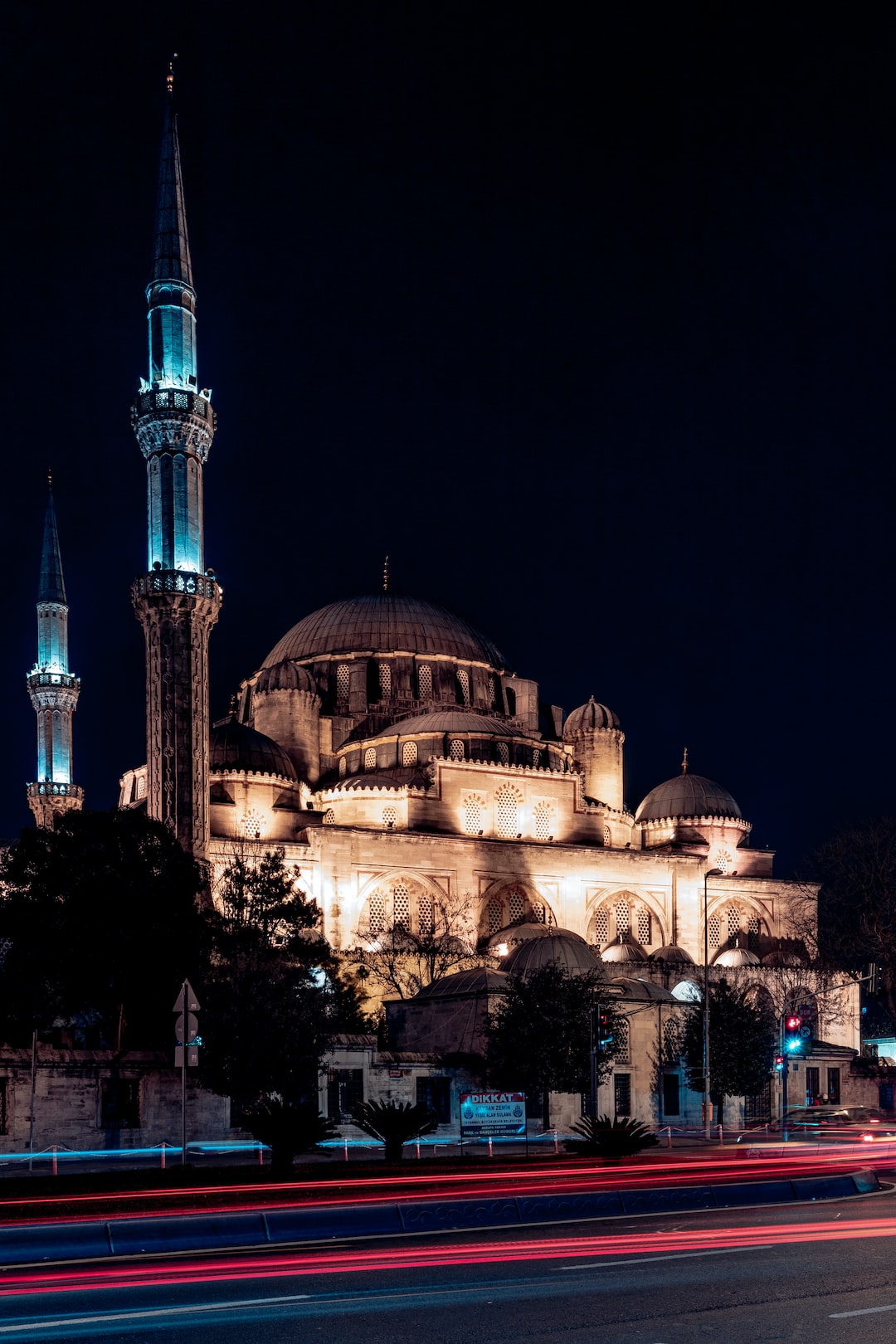
A historic mosque situated in the city of Jeddah, Saudi Arabia.
What to see or do: Admire the elegant architectural design of the mosque that blends traditional Islamic and modern building styles. Take a stroll around the beautifully landscaped gardens that surround the mosque.
Don’t miss: Witness the spectacular sight of the mosque lit up at night. This is a particularly magical time to visit.
Insider travel tips: Remember to dress conservatively and remove your shoes before entering the mosque. It is also recommended to visit during non-prayer times.
10. Roman Theatre of Sabratha
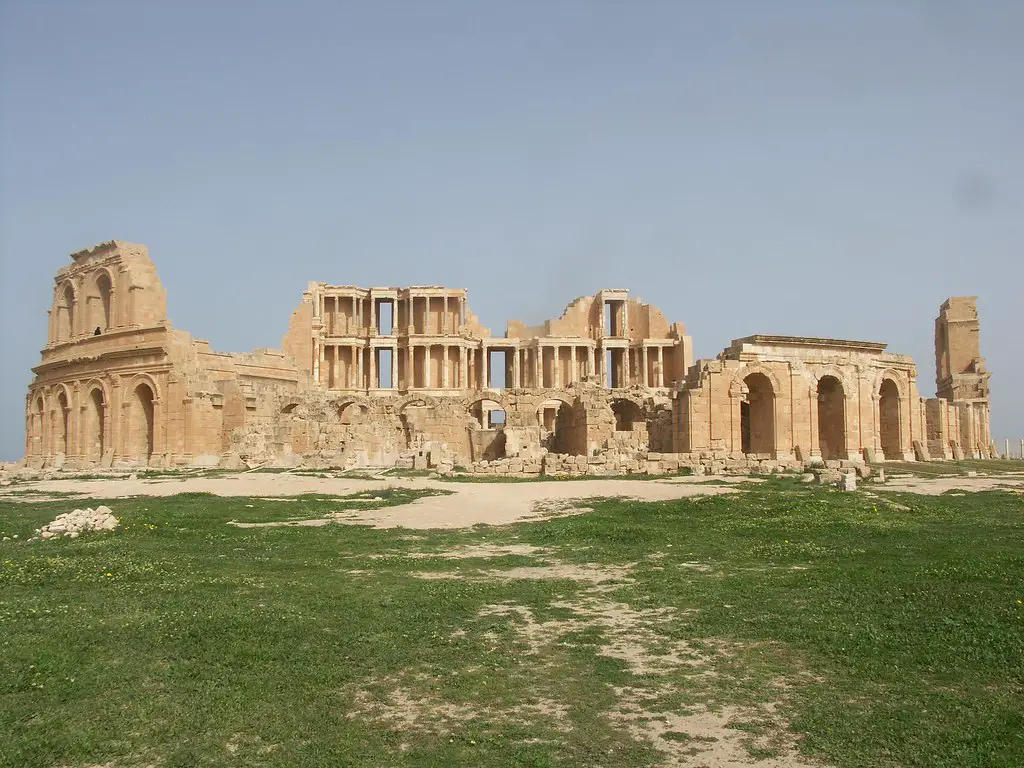
The Roman Theatre of Sabratha is an ancient theater ruin located in Sabratha, Libya.
What to see or do: Visitors can explore the well-preserved theater and its surrounding ruins, including the stage, seating area, and decorative columns. The architecture of the theater provides a glimpse into the sophistication and engineering prowess of the ancient Romans.
Don’t miss: While at the Roman Theatre of Sabratha, don’t miss the opportunity to take in the stunning view of the Mediterranean Sea, located just a few steps away from the theater.
Additionally, be sure to explore the other nearby ruins, including the amphitheater and the Temple of Liber Pater.
Insider travel tips: To get the most out of your trip to the Roman Theatre of Sabratha, consider hiring a local guide who can provide historical context and interesting anecdotes about the site.
It’s also important to wear sunscreen and bring plenty of water, as the area can get hot during the summer months.
Finally, be aware of potential safety concerns and check travel advisories before planning your trip.
11. Libyan National Museum
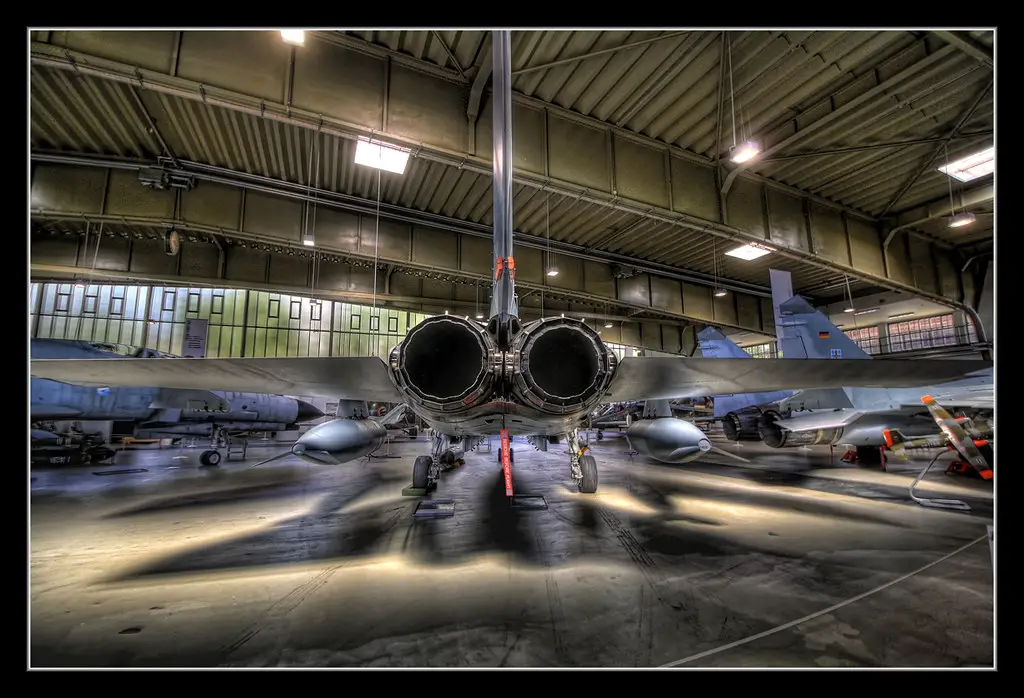
The Libyan National Museum is located in Tripoli and showcases the rich history and culture of Libya.
What to see or do: Visitors can explore the collection of artifacts that date back to prehistoric times and include Roman, Greek, and Islamic periods. The museum also features exhibits on natural history, ethnography, and the Libyan revolution.
Don’t miss: The highlights of the museum include the stunning mosaics from the ancient city of Leptis Magna, the Islamic calligraphy, and a replica of the famous ancient Libyan statue of the goddess Tanit.
Insider travel tips: Be sure to hire a guide to help navigate the exhibits and provide valuable context to the history and culture being showcased.
Also, keep in mind that photography is not allowed inside the museum.
12. Arch of Trajan at Tripoli
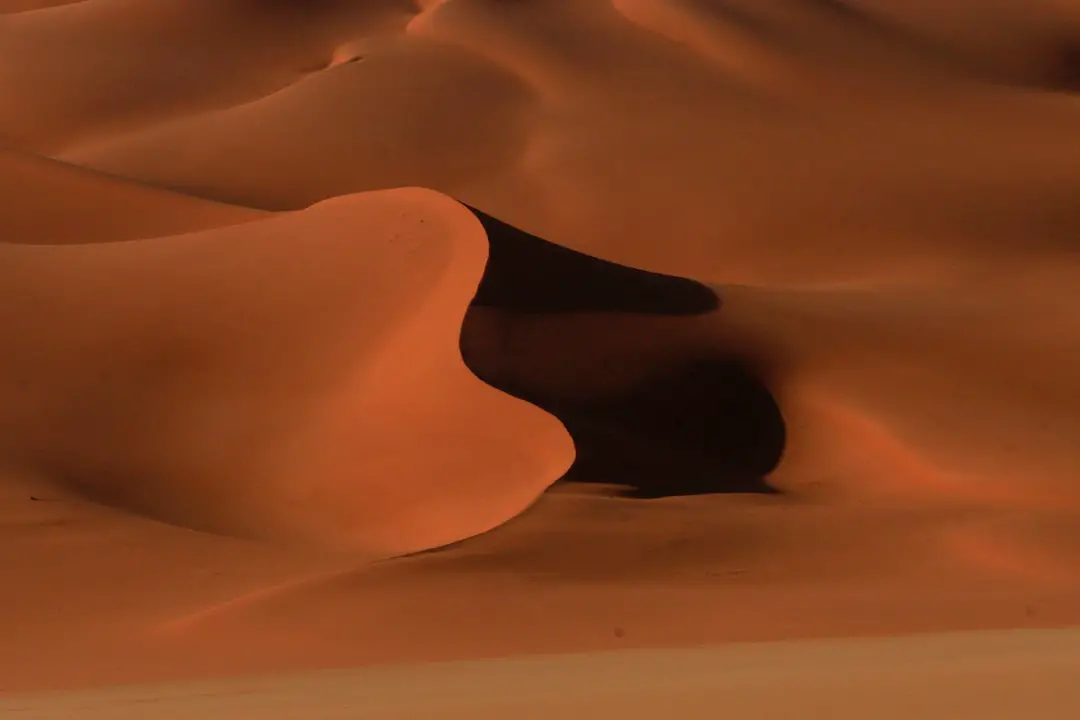
The Arch of Trajan, also known as the Arch of Augustus, is a Roman triumphal arch located in the city of Tripoli, Lebanon.
What to see or do: Visitors can observe the impressive architectural details of the arch, including its intricate carvings, friezes, and sculptured figures. The arch is made of white marble and stands at 20 meters high.
Don’t miss: Take a closer look at the large frieze on the arch, which depicts scenes from Trajan’s victory over the Parthians. The sculptures on the arch show the emperor Trajan dressed in his military attire, leading his troops to victory.
Insider travel tips: To avoid the crowds and the heat, consider visiting the arch early in the morning or in the late afternoon. There are no entrance fees to visit the arch, so feel free to stop by and take some photos.
It’s also a good idea to wear comfortable shoes as the site is located on a hill and there are uneven surfaces to navigate.
13. Jebel Akhdar
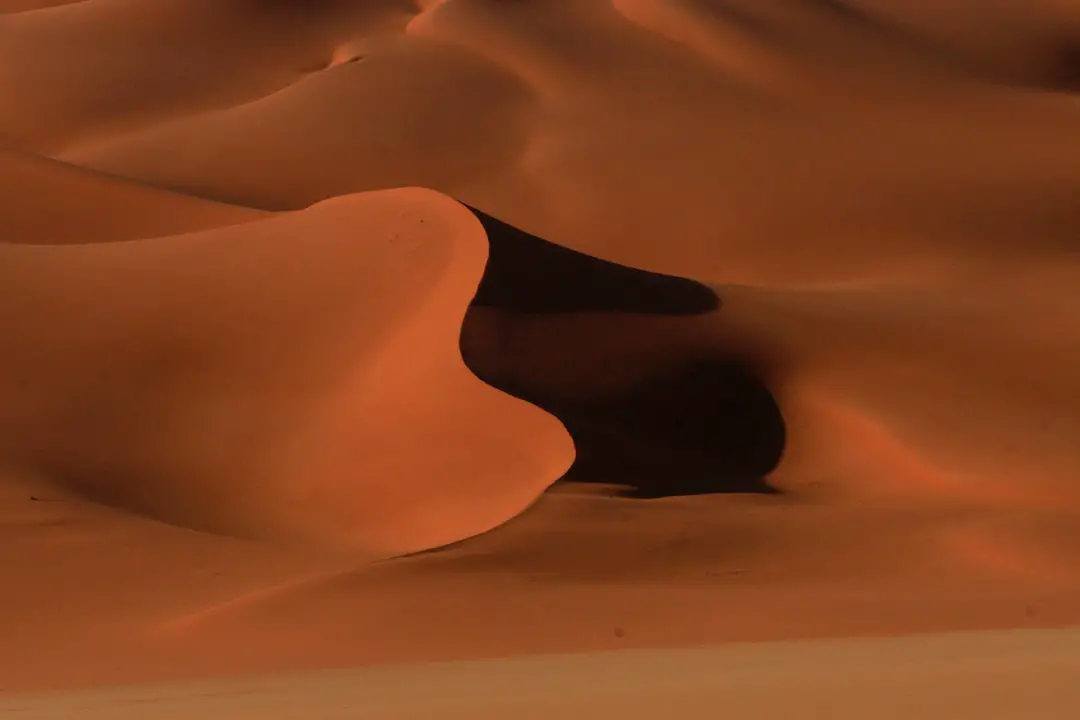
A mountain range located in the Al Hajar Mountains of Oman, known for its stunning landscapes and natural beauty.
What to see or do: Trek through the mountains and enjoy the breathtaking views of the surrounding areas, explore the traditional villages and their architecture, visit the ancient forts and learn about the history of the region.
Don’t miss: Seeing the famous terraced gardens known as the “Green Mountains” and visiting the Al Ain Monastery, a 7th-century structure built into the cliffs of Jebel Akhdar.
Insider travel tips: Dress conservatively while visiting the traditional villages and forts, and bring comfortable shoes for hiking. Visit during the cooler months between October and April for the best weather.
14. Temple of Zeus at Cyrene
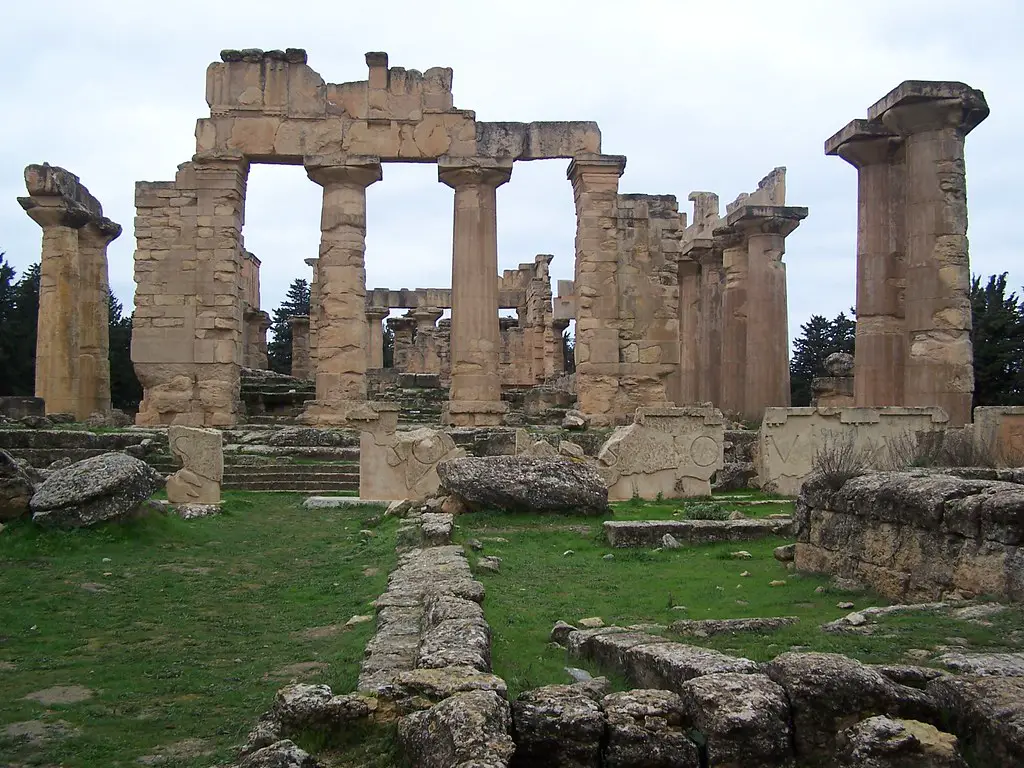
Ancient Greek temple dedicated to Zeus located in Cyrene, Libya.
What to see or do: Explore the temple ruins, including the impressive remains of the main sanctuary, columns, and gates. Admire the impressive engineering feat of the temple’s construction, including the giant columns that once held up the roof.
Don’t miss: The amazing panoramic views of the city from the top of the temple. Take a moment to appreciate the stunning natural beauty of the surrounding landscape.
Insider travel tips: Wear comfortable shoes and pack plenty of water, as the climb to the temple can be steep and hot. Be sure to visit early in the day to avoid the crowds and the midday heat.
Also, consider hiring a local guide to learn more about the history and significance of the temple.
15. Berenike Archaeological Site

Berenike is an ancient Roman port located on the Red Sea coast of Egypt. It was an important trading center for goods such as spices, textiles, and ivory.
What to see or do: Visitors can explore the ruins of the ancient port city, including the remains of warehouses, houses, and the harbor. There is also a Roman fort that can be visited.
Don’t miss: The well-preserved remains of the city’s temple dedicated to the goddess Isis, which features colorful mosaics and intricate carvings.
Insider travel tips: – Wear comfortable shoes as there is a lot of walking to be done.
16. El-Muntazah Palace
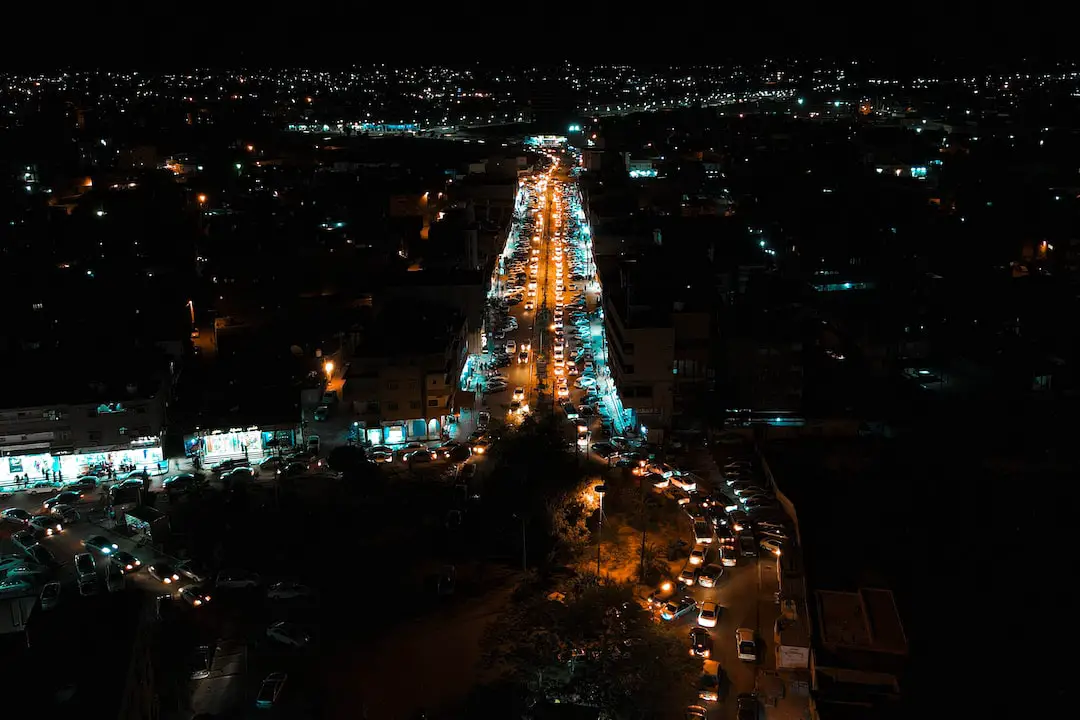
A palace complex in Alexandria, Egypt, built by Khedive Abbas II in 1892.
What to see or do: Visitors can explore the scenic gardens, buildings, and lakes within the palace complex. The palace itself has functioned as a museum since the 1950s, showcasing an impressive collection of artwork and historical artifacts.
Don’t miss: The palace’s stunning architecture, including the intricate detailing of the building’s domes and towers, and the beautiful views of the Mediterranean Sea from the palace gardens.
Insider travel tips: For those interested in history, guided tours are available for a more in-depth understanding of the palace’s historical significance.
Also, be sure to bring comfortable walking shoes, as there are plenty of paths and stairs to navigate throughout the palace and gardens.
17. Ain Hanech Stone Age Site
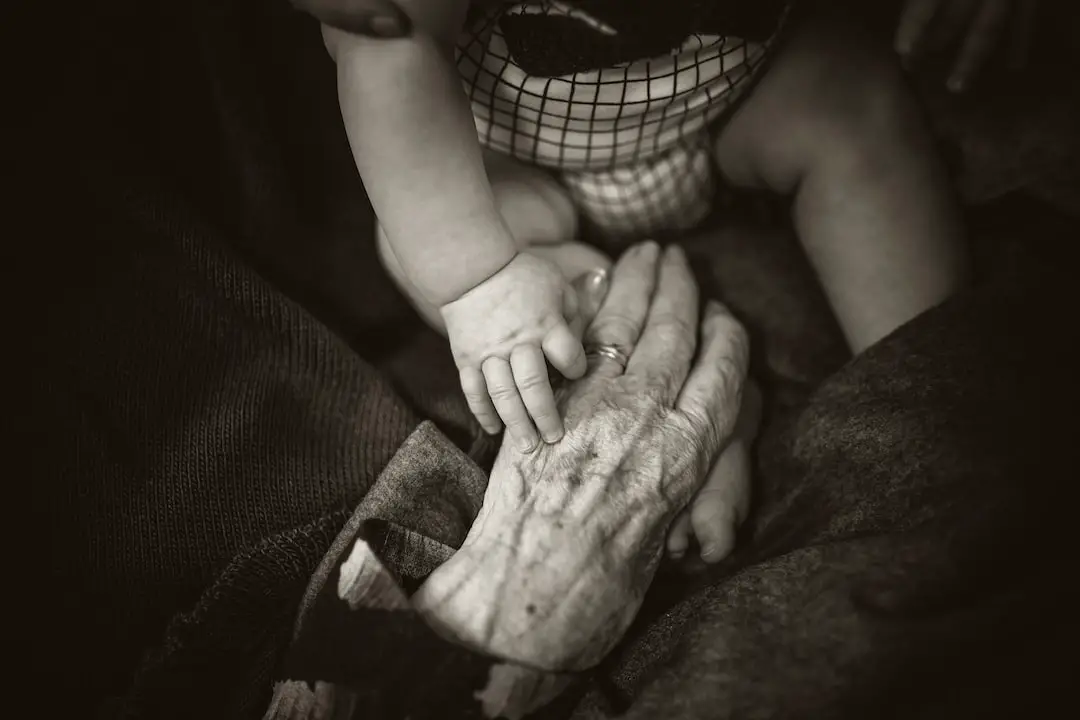
Ain Hanech Stone Age Site is an archeological site in Algeria that bears evidence of early human existence and evolution.
What to see or do: Visitors can explore the various excavation sites and view the numerous stone tools and fossils on display. The museum on-site houses artifacts that date back thousands of years.
Don’t miss: The opportunity to see one of the oldest and most significant Stone Age sites in Africa. The chance to observe the history of human evolution and development.
Insider travel tips: It is recommended to hire a local guide to enhance your experience and learn more about the site’s history and significance.
Visitors should also wear comfortable shoes and bring sunscreen, water, and a hat as the site can get hot.
18. Gurgi Mosque
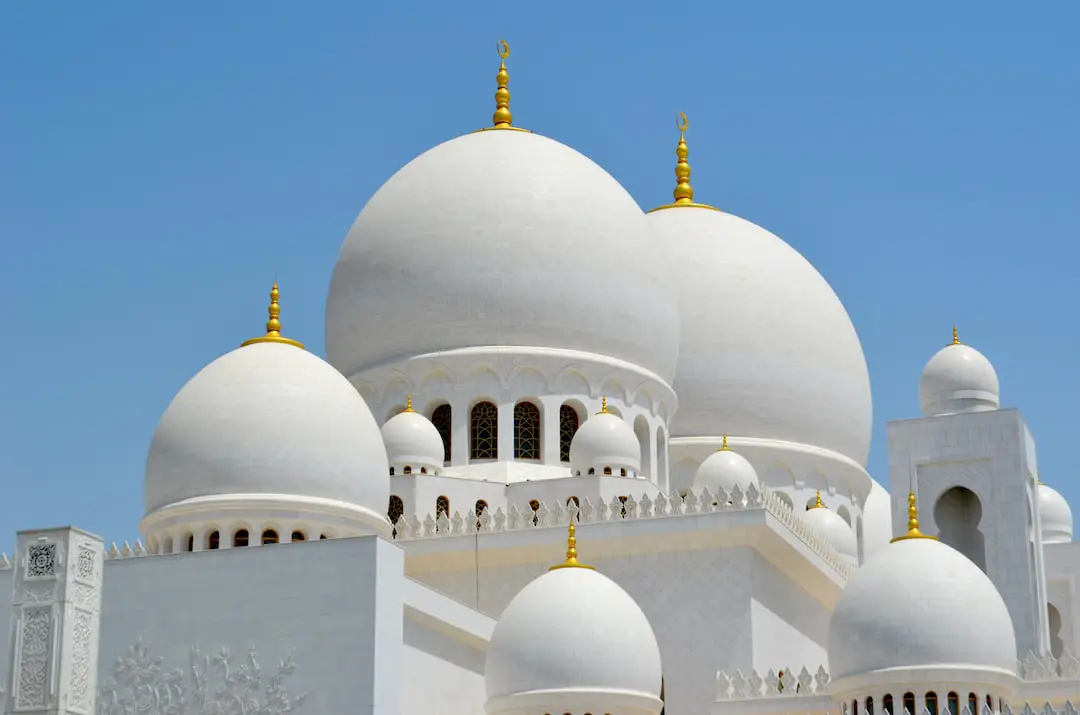
The Gurgi Mosque is an ancient mosque located in the city of Cairo, Egypt.
What to see or do: Visitors can admire the beautiful architectural design of the mosque, particularly the intricate patterns and decorations on the walls and ceilings.
It is also a great spot for quiet contemplation and prayer.
Don’t miss: Don’t miss the chance to visit the mihrab, which is the niche in the wall that indicates the direction of Mecca.
The mihrab here is particularly stunning and intricately decorated.
Insider travel tips: When visiting the Gurgi Mosque, remember to dress modestly and remove your shoes before entering, as is customary in Islamic places of worship.
Visitors may also want to bring a guidebook or hire a local guide to learn more about the history and significance of the mosque.
19. Islamic Museum of Tripoli
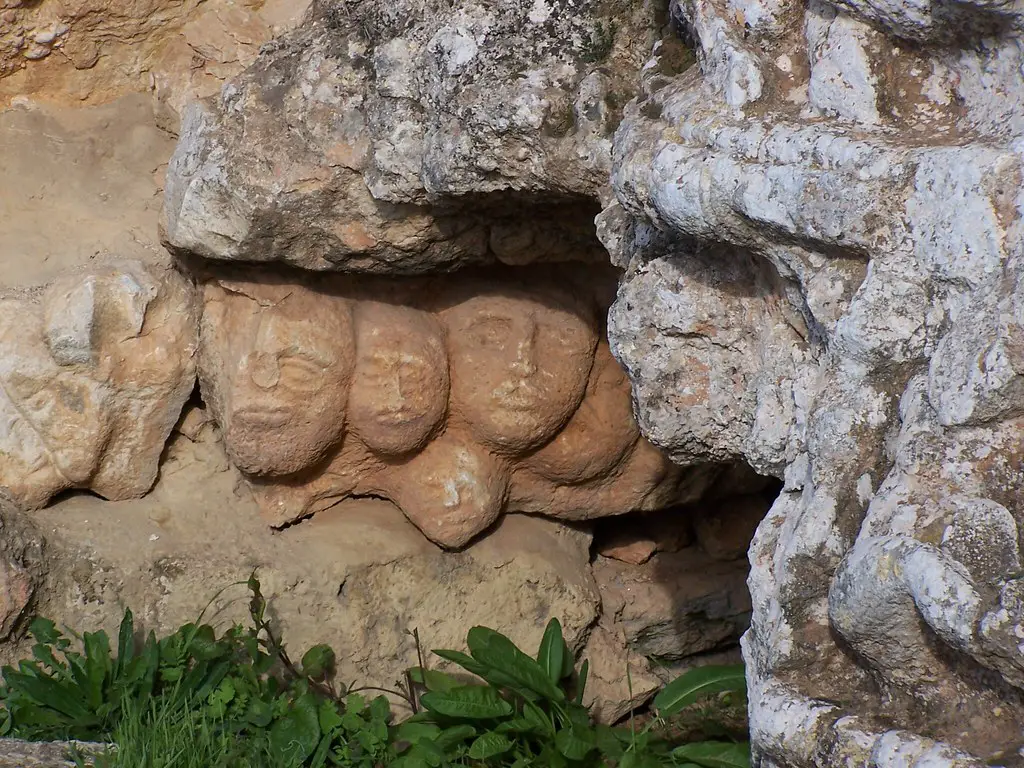
The Islamic Museum of Tripoli is a museum dedicated to preserving and showcasing various artifacts, manuscripts, and artwork related to the Islamic faith and its culture.
What to see or do: Visitors can see a vast collection of Islamic art, including pottery, textiles, and jewelry. The museum’s collection also includes rare Qur’ans, manuscripts, and calligraphy works.
It also features a beautiful courtyard with a mosaic fountain, providing a perfect setting to relax and absorb the tranquil surroundings.
Don’t miss: One of the museum’s highlights is its stunning collection of traditional Islamic mosaic and tile work, some of which dates back to the 12th century.
The calligraphy section of the museum showcases the beauty of the Arabic script and its use in Islamic art and culture.
Insider travel tips: It’s best to visit the museum in the morning when the light is softer as the delicate mosaic and tile work are easily damaged by the sun’s heat.
Visitors should spend some time in the courtyard, which is a serene oasis that provides a glimpse of everyday life in Tripoli.
A guide who is knowledgeable about Islamic art and architecture is worth considering to better appreciate the museum’s unique collection.
20. Vandal and Byzantine Baths at Sabratha
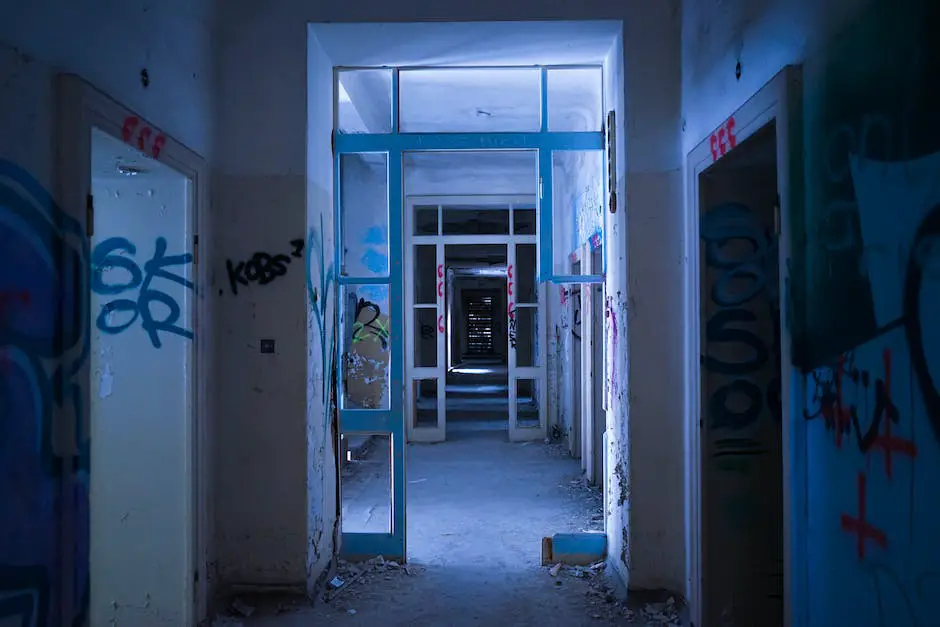
Vandal and Byzantine Baths at Sabratha are ancient Roman baths ruins located in the city of Sabratha in Libya.
What to see or do: Explore the ruins of the ancient Roman baths, admire the beautiful mosaics and intricate architectural designs.
Don’t miss: The impressive hypocaust system used for heating the water and floors of the baths, the intricate design of the mosaic floors, and the stunning views of the Mediterranean Sea.
Insider travel tips: Wear comfortable shoes as the site involves some walking. Also, visit the site early in the morning to avoid the heat and crowds.
21. Belas Kfar Ghanem
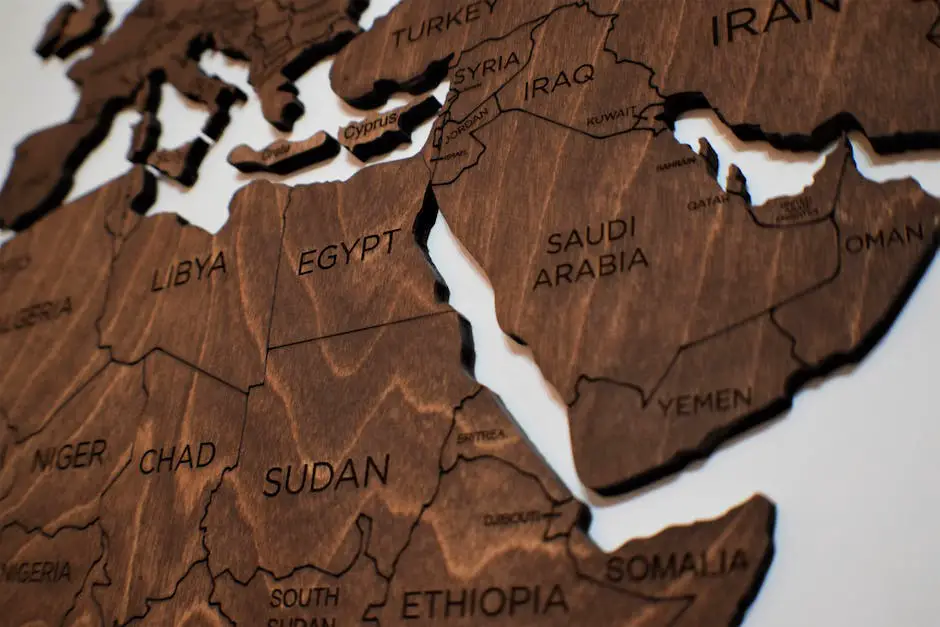
Belas Kfar Ghanem is a picturesque countryside village located in the northwest region of Syria.
What to see or do: Belas Kfar Ghanem is renowned for its lush green fields and the beautiful Al-Sermani River that runs through it, providing a perfect setting for a peaceful stroll or picnic.
Visitors can also witness traditional village life and agriculture.
Don’t miss: A visit to the old stone houses and the village’s ancient water mill is a must.
For those seeking a more adventurous outing, the village is surrounded by stunning mountain ranges and canyons, perfect for hiking or mountain biking.
Insider travel tips: Try the local cuisine which includes grape leaves, stuffed zucchini, and tabbouleh salad. The villagers are friendly and hospitable, so take the opportunity to observe and take part in their daily traditions.
22. Rock paintings of Wadi al-Ajal
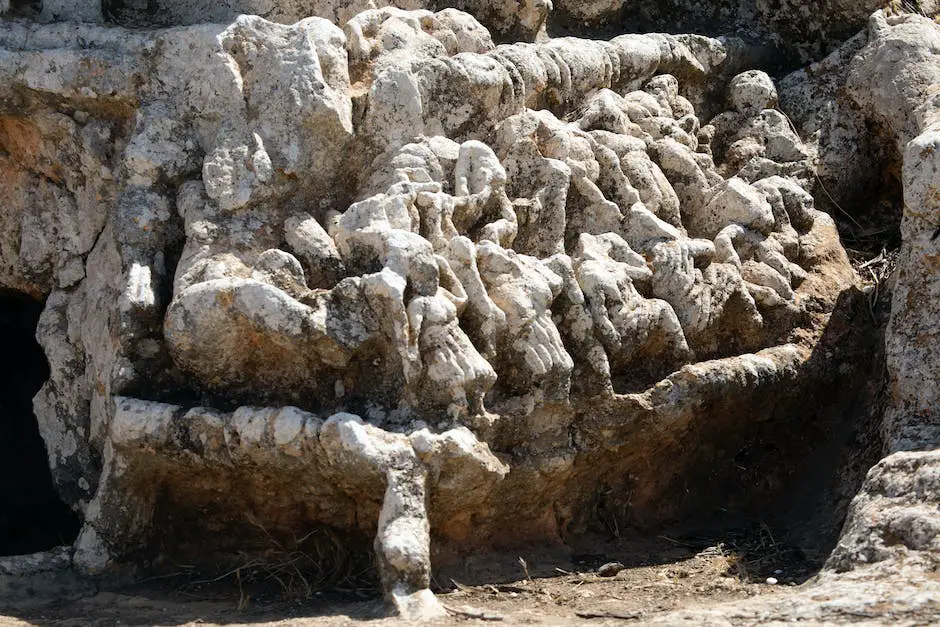
The Rock paintings of Wadi al-Ajal are a collection of petroglyphs (rock carvings) and pictographs (rock paintings) located in the Wadi al-Ajal valley in Libya.
What to see or do: Visitors can see a variety of images which depict local wildlife, cattle, and sheep, as well as human figures, geometric shapes, and scenes of battles and hunting.
There are also inscriptions in the Tifinagh script, which was used by the Berber people.
Don’t miss: Be sure to see the depictions of the stunning giraffes, as well as the intricate geometric designs and engravings.
Insider travel tips: – The paintings are easily accessible but are located in a remote desert area, so be sure to bring plenty of water and sun protection.
23. Great Man-Made River Project
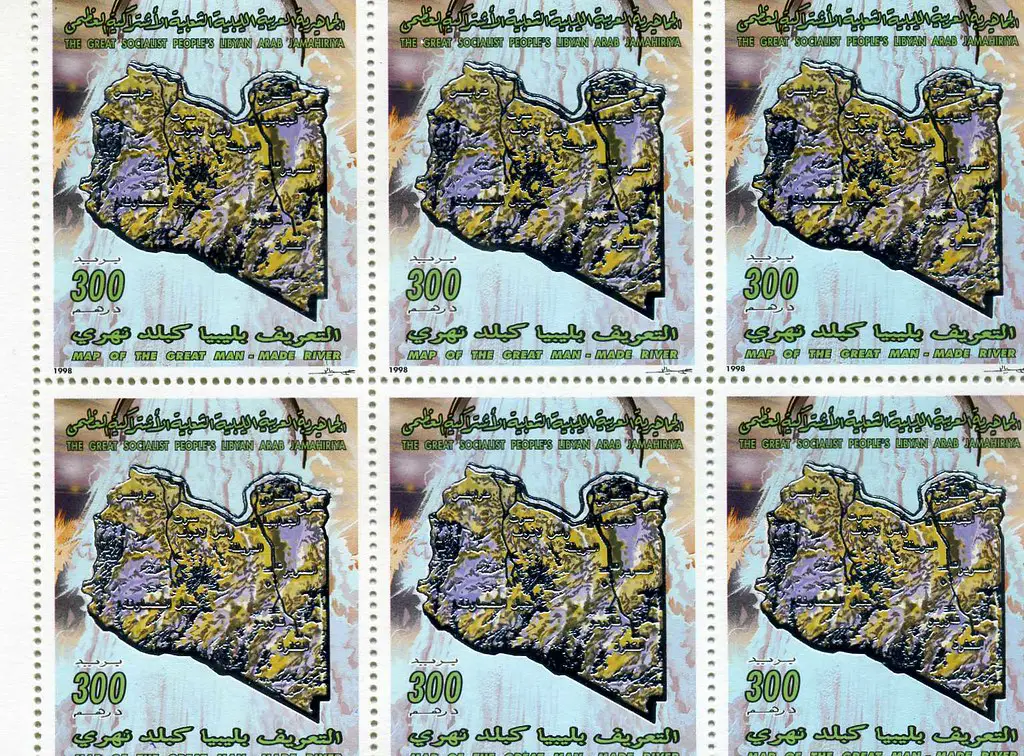
The Great Man-Made River Project is a massive water irrigation project in Libya, designed to provide the country with fresh water by pumping it from underground aquifers in the Sahara desert.
What to see or do: Visitors can visit the project’s control center, located near the city of Benghazi, to learn about the project’s history and significance.
There are also various pump stations and pipelines throughout the desert that can be seen on guided tours.
Don’t miss: The largest and most impressive part of the project is the underground pipeline network, which spans over 3,380 miles and connects to over 1,300 wells.
It’s an amazing feat of engineering and a must-see for anyone interested in infrastructure and technology.
Insider travel tips: Be sure to visit during the cooler months of the year, as the desert can be extremely hot and inhospitable during the summer.
Also, note that some areas may be restricted for security reasons, so it’s best to plan your visit in advance and check for any updates on travel advisories.
24. Tadrart Acacus
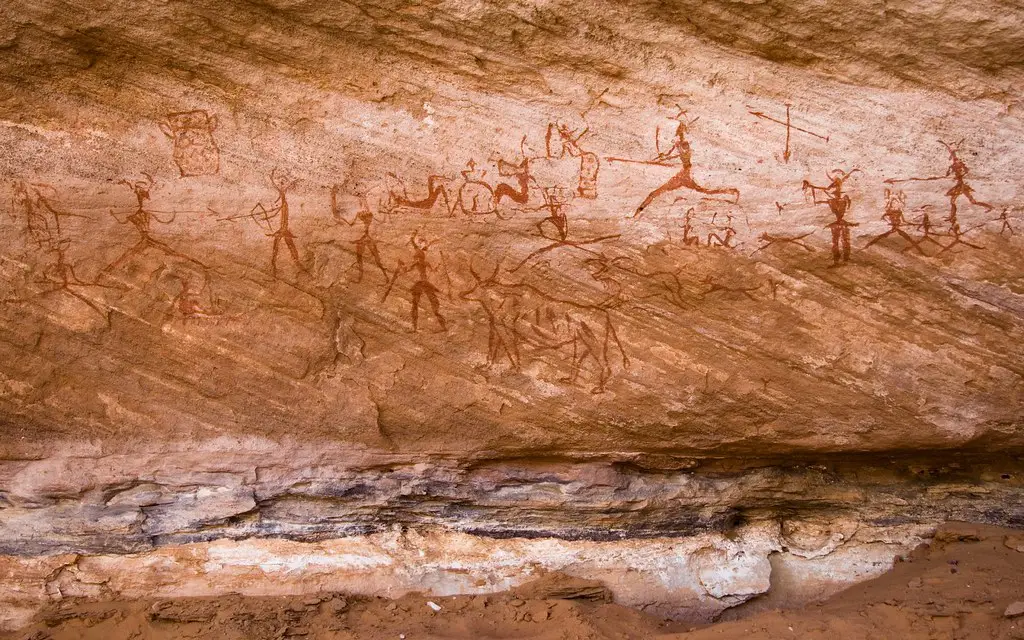
Tadrart Acacus is a mountain range and national park in southwestern Libya.
What to see or do: Visitors can explore the unique landscapes of the area, including towering sand dunes, rocky canyons, and ancient cave paintings dating back thousands of years.
Hiking, camping, and camel treks are popular activities.
Don’t miss: The UNESCO World Heritage Site of Wadi Mathendous, known for its stunning rock formations and prehistoric rock art. Also, make sure to witness the incredible starry sky in the desert.
Insider travel tips: Be sure to plan ahead and secure the necessary permits for travel in the area. It’s also recommended to hire a local guide for exploring the park and to bring plenty of water and sunscreen.
25. Gadamis
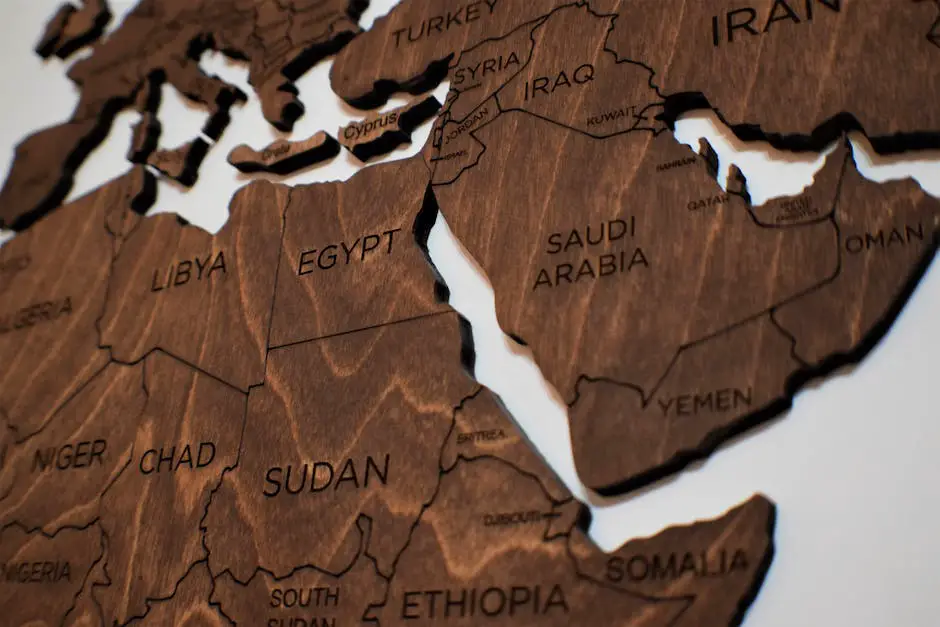
Gadamis, also known as Ghadames, is a historic oasis town located in western Libya.
What to see or do: – Wander through the Old Town, a UNESCO World Heritage Site known for its distinctive architecture and covered alleyways.
Don’t miss: – The weekly souq, where locals gather to sell handmade crafts, clothing, and food.
Insider travel tips: – Gadamis can get very hot in the summer months, so make sure to bring plenty of water and sunscreen.
26. The Arch of Septimius Severus
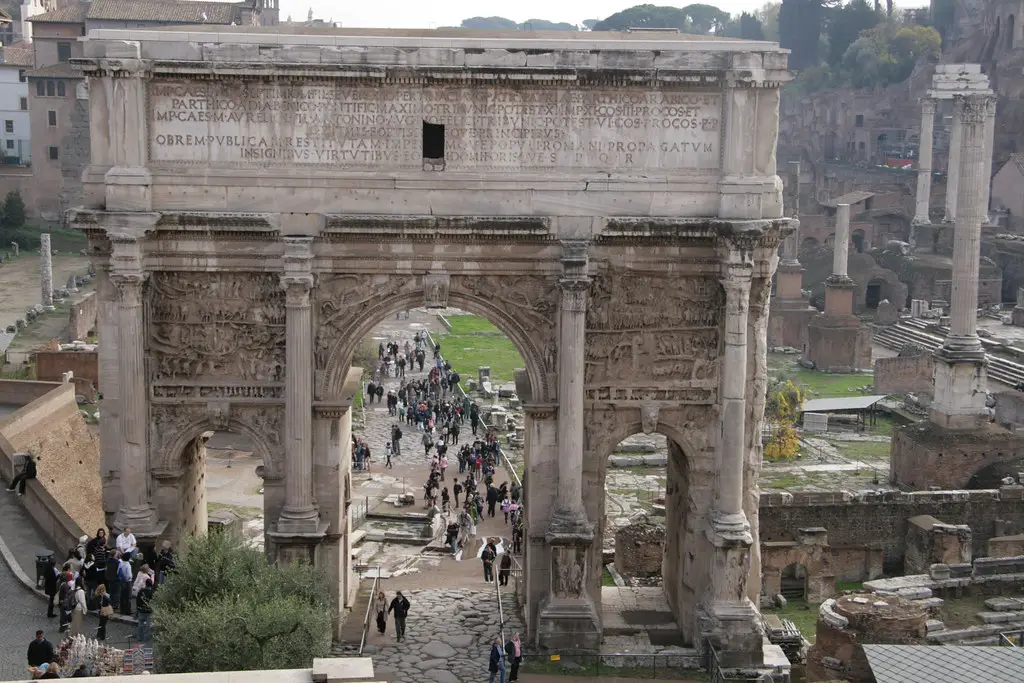
The Arch of Septimius Severus is a triumphal arch located in the Roman Forum of Rome.
What to see or do: Visitors can admire the impressive architecture and sculptures of the arch, including impressive relief carvings depicting military victories and sacrifices, as well as statues of Roman deities.
Don’t miss: The intricate details of the sculptures, especially the depictions of soldiers and war scenes, are not to be missed.
Insider travel tips: Visit early in the morning or in the evening to beat the crowds and get the best photos without other tourists in the way.
Also, consider taking a guided tour to learn more about the fascinating history behind the arch.
27. Martyrs’ Square

Martyrs’ Square is a historical and political landmark located in the heart of downtown Beirut, Lebanon.
What to see or do: Visit the Martyrs’ Monument, which is dedicated to Lebanese nationalists who were executed during the Ottoman Empire’s rule. See the impressive statue of Lebanese independence hero, General Fouad Chehab.
Don’t miss: Take a walk around the square and admire the beautiful architecture of nearby buildings such as the Mohammad Al-Amin Mosque and the magnificent Nejmeh Square Clock Tower.
Insider travel tips: Visit the square in the evening to see it all lit up and bustling with locals.
28. Jamahiriya Museum
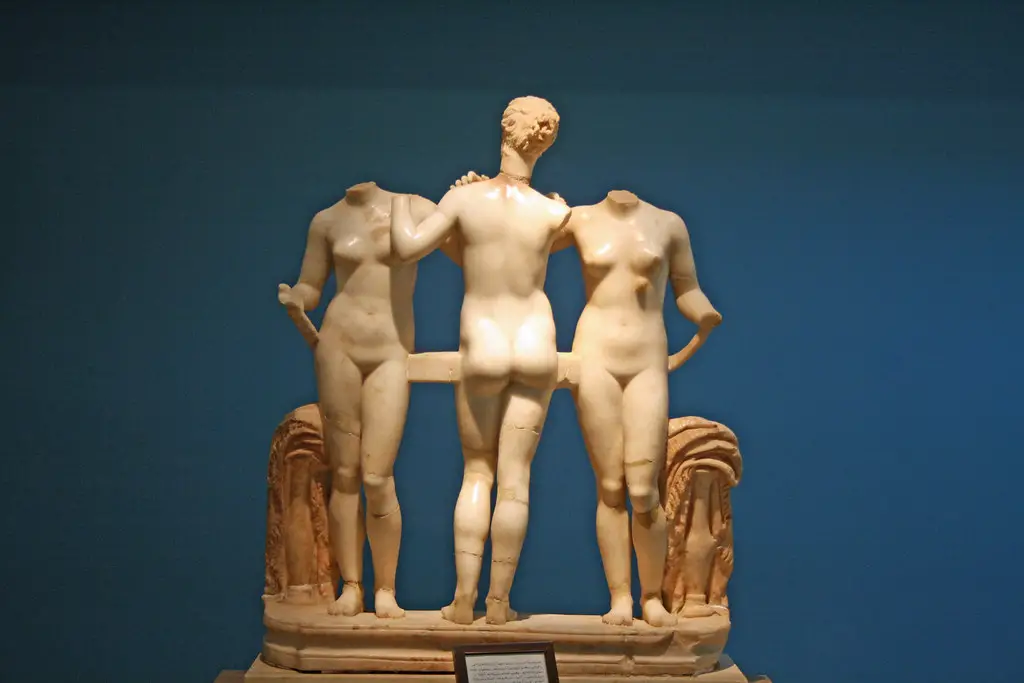
The Jamahiriya Museum, also known as the National Museum of Libya, is a museum in the city of Tripoli that showcases the history and culture of Libya.
What to see or do: The museum houses a variety of artifacts and exhibits, including ancient Roman and Greek sculpture, prehistoric fossils and tools, and traditional Libyan clothing and crafts.
Visitors can explore the museum’s various rooms, each of which is dedicated to a different era or aspect of Libyan history.
Don’t miss: One of the highlights of the museum is the huge mosaic of the Battle of Issus, which depicts Alexander the Great’s defeat of Darius III of Persia.
Another interesting exhibit is the section dedicated to Libya’s revolutionary past, which includes photos and artifacts from the country’s struggle for independence.
Insider travel tips: – The museum is closed on Fridays, so plan your visit accordingly.
29. Apollonia (Marsa Sousa)
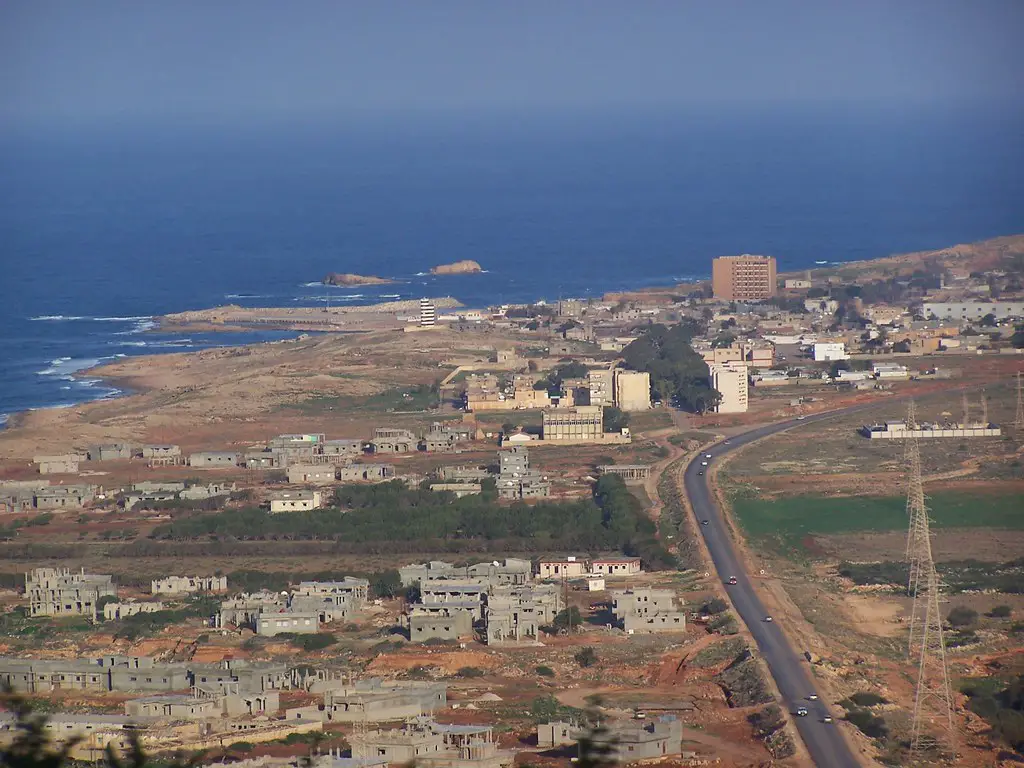
Apollonia is an ancient city located in Marsa Sousa, Libya. It was once an important port and trade center in the Mediterranean.
What to see or do: Explore the well-preserved ruins of Apollonia, including the ancient theater, basilica, and Roman baths. Admire the stunning views of the coastline from the top of the acropolis.
Wander through the streets and imagine what life was like in this bustling city thousands of years ago.
Don’t miss: The museum, which houses a collection of artifacts found at the site, including mosaics, statues, and pottery. The amphitheater, where gladiators once battled it out for the entertainment of the crowds.
Insider travel tips: Visit early in the morning or late in the afternoon to avoid the midday heat, and wear comfortable shoes for walking on the uneven terrain.
Bring along sunscreen and water to stay hydrated.
30. Museum of Libyan Resistance
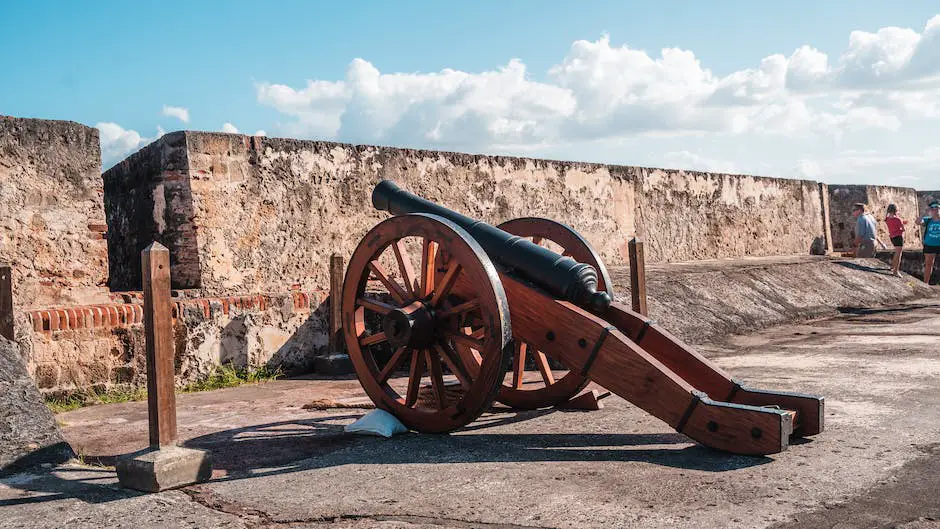
A museum dedicated to the history of Libya’s struggle for independence and the sacrifices made during the Italian colonization.
What to see or do: Explore the various exhibits showcasing the heroic efforts of Libyan soldiers, including weapons and equipment used during the battles. The museum also features a library full of literature and books about the subject.
Don’t miss: The large replica of the famous Benghazi clock tower, which was destroyed during the revolution.
Insider travel tips: – Plan your visit during the morning or late afternoon to avoid the crowds.
💪 Support independent web, support us:
